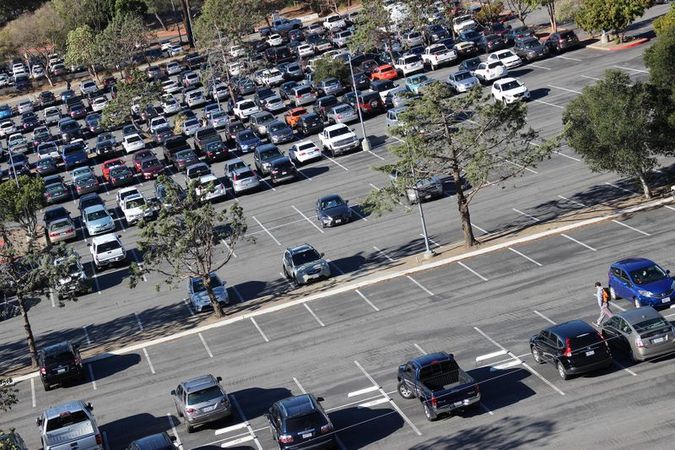For over 21,812 students, 1,473 faculty and 1,670 staff members — not to mention countless visitors each year — university parking can get hectic. Permits collect dust hanging from your rearview mirror, parking lots get crammed in the blink of an eye and odds are you’ve experienced a rise in stress level just thinking about an expired meter.
But with brand new license plate recognition (LPR) software, the university is making waves to improve the lives of everyday drivers.
Transportation and Parking Services (TAPS) Director Marlene Cramer said this new platform is creating a better parking experience for students, faculty, staff and visitors by providing real-time and long-term data that will help TAPS stay on top of trending models.
“Cal Poly is growing, offering more housing, reducing the number of students driving to campus and therefore reducing our environmental footprint, which is a big goal for the university,” Cramer said. “Yet we still have a lot of people driving to campus and needing parking. This new system will allow us to better manage the lots and improve the customer experience immensely.”
With this new technology, the university hopes to eliminate myriad problems along with just physical parking permits. Gone are the days of forgetting your permit or displaying it incorrectly. You won’t have to worry about losing your permit, or having to pay a replacement fee, either.
LPR will also streamline the parking permit renewal process. This means no more waiting in line, no more extra processing time and no more extra trips to pick up permits.

How It Works
LPR is an advanced parking software that provides virtual permits through a vehicle’s license plate instead of paper permits or plastic hangtags. Once your license plate, vehicle make and model are register in the online parking portal and linked to a permit, a virtual permit is linked to your license plate number.
When you park on campus, your vehicle’s license plate is captured by cameras mounted on parking vehicles. LPR works just like a supermarket scanner with your license plate functioning as a bar code. The software will read your plate numbers, and automatically reference the parking database to verify a valid permit in that location.
This software will help Cal Poly create a stronger system of tracking, and provide real-time data to better understand and manage parking and traffic patterns throughout the university.
You might be wondering how your license plate information is used. The info collected by this software will only be checked against the parking database to verify Cal Poly parking through permits, meters and pay stations.
If your license plate isn’t always crystal clear, or if you have a lot of decorative stickers on your bumper, no worries. As long as your plates are legal for driving, the system will be able to read them.

Environmental Impact
Additionally, this technology will reduce waste and support Cal Poly’s commitment to campus sustainability.
In the past, plastic permit production led to manufacturing impacts such as increasing the use of fossil fuels and contributing to factory facilities’ carbon footprint.
LPR will also eliminate paper receipts at campus pay stations, disposal of expired and unused plastic permits. It also eliminates the delivery of such permits, including emissions related to transportation.
Less unnecessary paper and plastic in Cal Poly’s parking program means a step forward in the journey to zero waste.
How to Sign Up
Getting your vehicle registered is easy. Just head over to the TAPS Parking Portal, log in with your Cal Poly username and password, register your vehicle and link it to your permit.
If you’re not looking to park long term, don’t sweat it. Staff will still be able to purchase short-term permits online and visitor parking permits will still be available at the Public Safety Reception Center, Visitor Center and pay stations. Visitors must know their license plate number when purchasing parking.
Have more questions? Visit the Cal Poly TAPS website.

